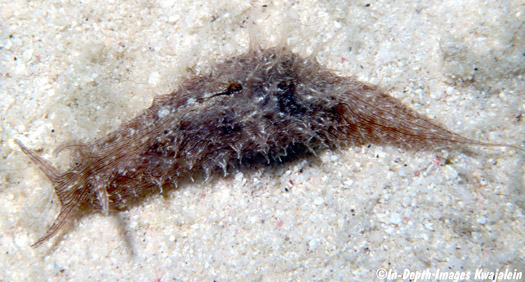
Stylocheilus striatus is sporadically very abundant in the Marshalls. While sometimes they are hard to find, at other times many hundreds can be counted in a single dive. We have noticed that population blooms of this species seem to follow invasions by the brown, hair-like blue-green alga Lyngbya majuscula. "Blue-green" algae is kind of an unfortunate designation, since this species is usually brown and grows in clumps of long, hair-like strands that continually wave in the currents. Occasionally on lagoon reefs and pinnacles, Lyngbya sprouts up all over the place, overgrowing rocks and choking out living corals. After a while, these blooms die out, and the die-out often seems related to a sudden appearance of large numbers of Stylocheilus. The sea hares are also often found on the buoy lines installed by divers to mark sunken ships in Kwajalein Atoll's lagoon. Lyngbya often grows in clumps on these lines, and the sea hares, along with Stylocheilus longicauda, can often be found in these clumps. Its first Marshall Islands record was as Stylocheilus longicaudus from Enewetak Atoll by Marcus & Burch (1965). This is also an abundant species in Hawaii and many other areas.

Sometimes in young specimens the lines (striations) that give the species its name are very distinct.
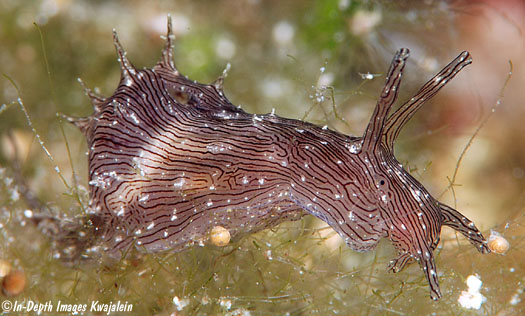
Specimens also often bear brilliant blue spots.
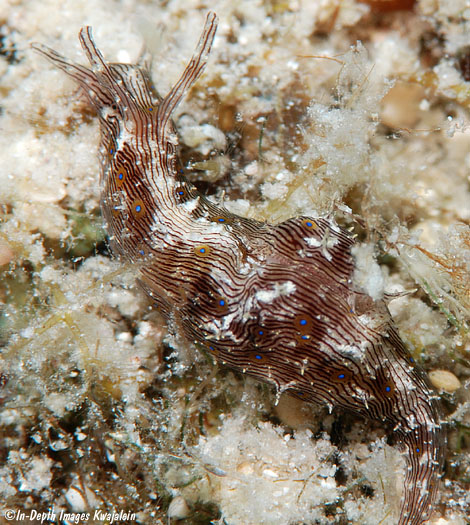
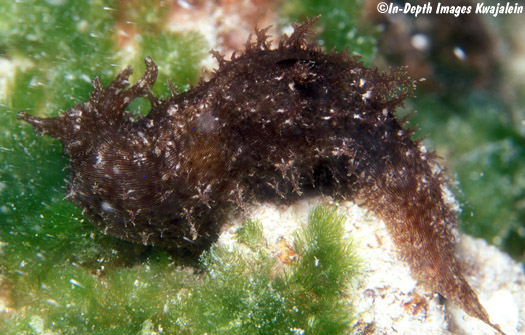
An animal from Ailinglaplap Atoll photographed by Stan Jazwinski.
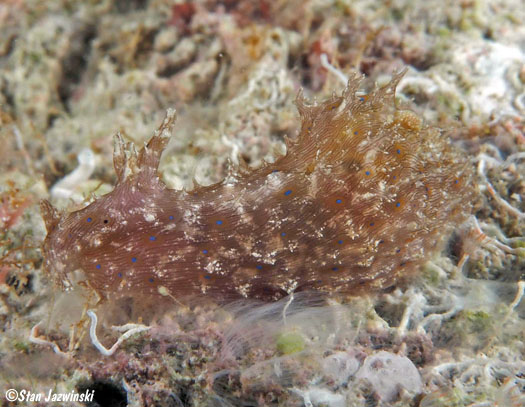
The animal below is on a hairlike clump of Lyngbya.
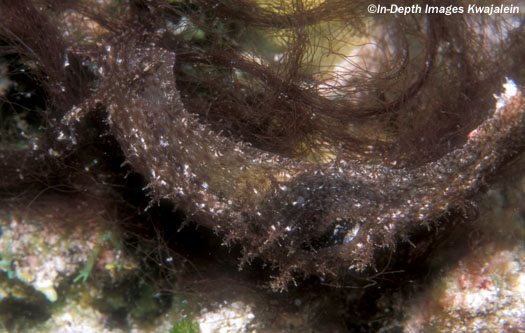
Below is a cluster of three individuals.
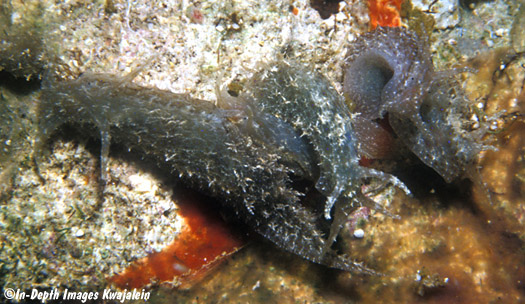
The species was also observed in Majuro Atoll by Ken Cone and Beth Van Zummeren.
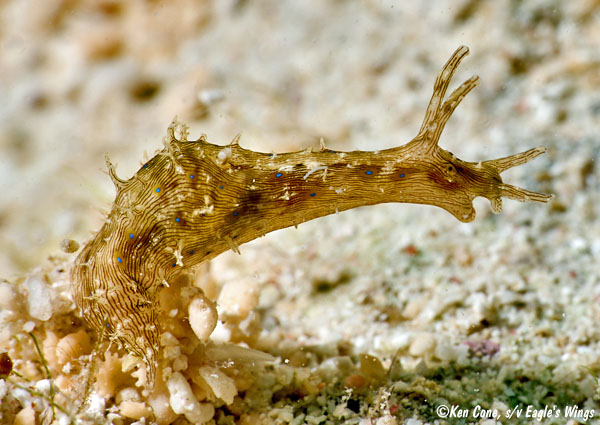
Created 31 January 2007
Updated 4 August 2021